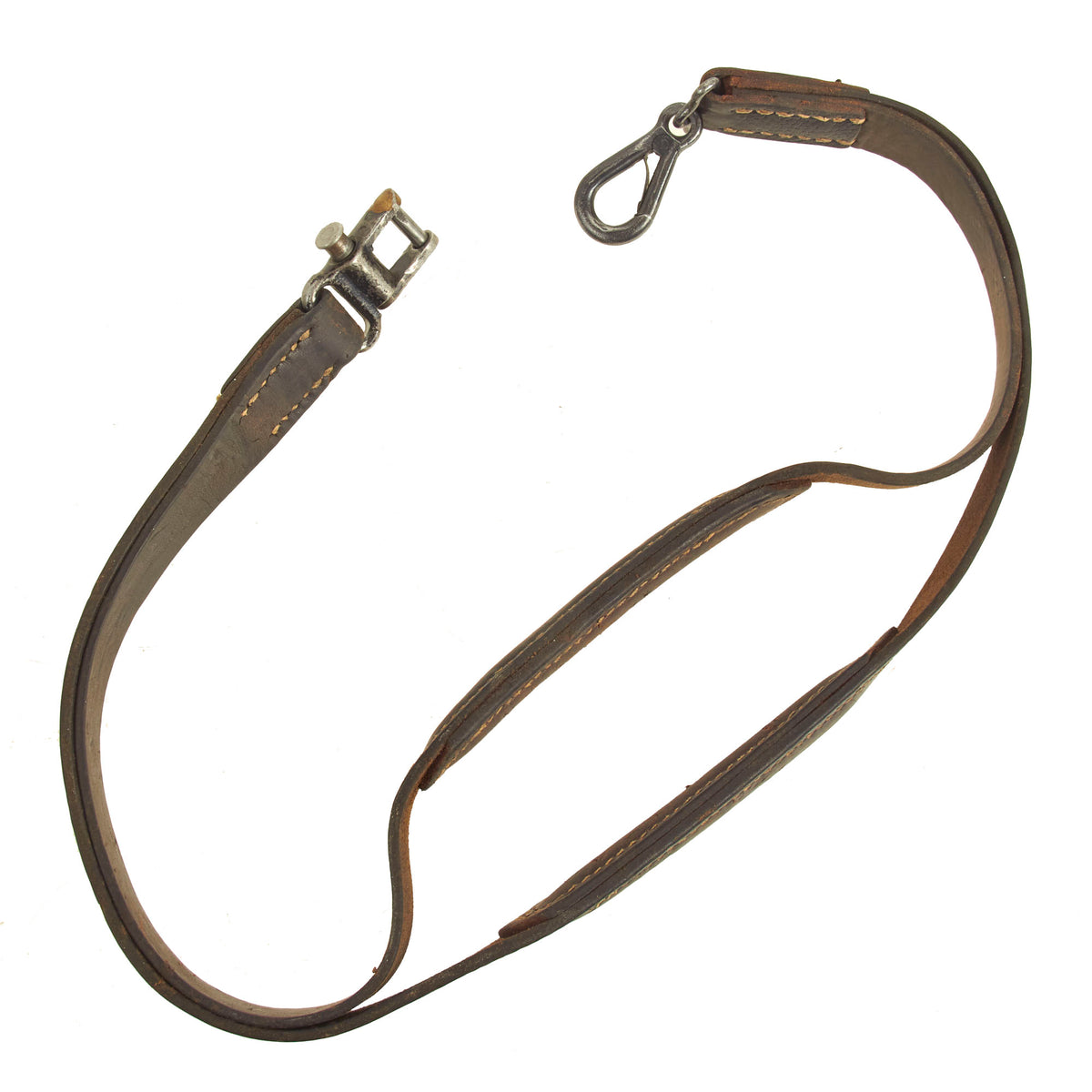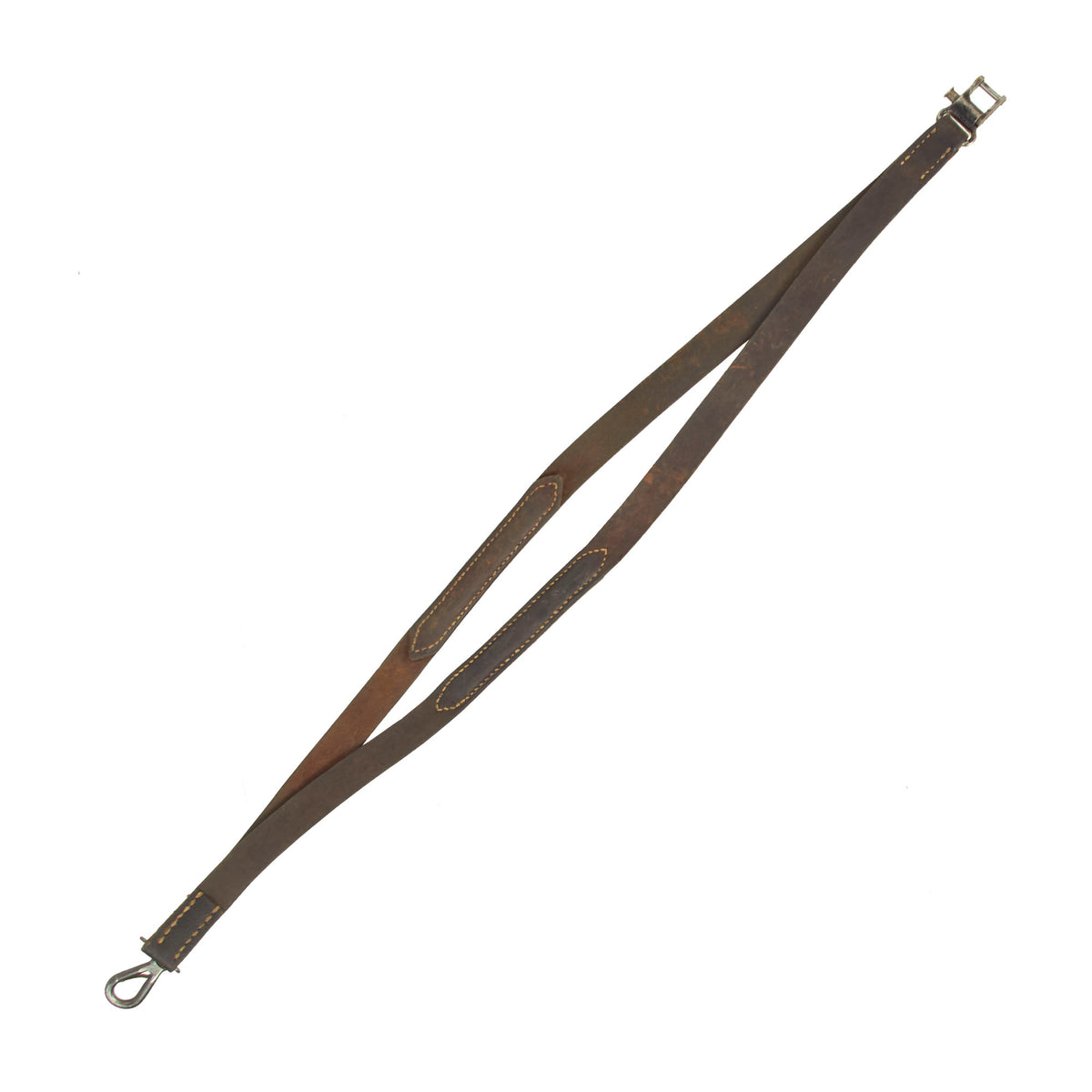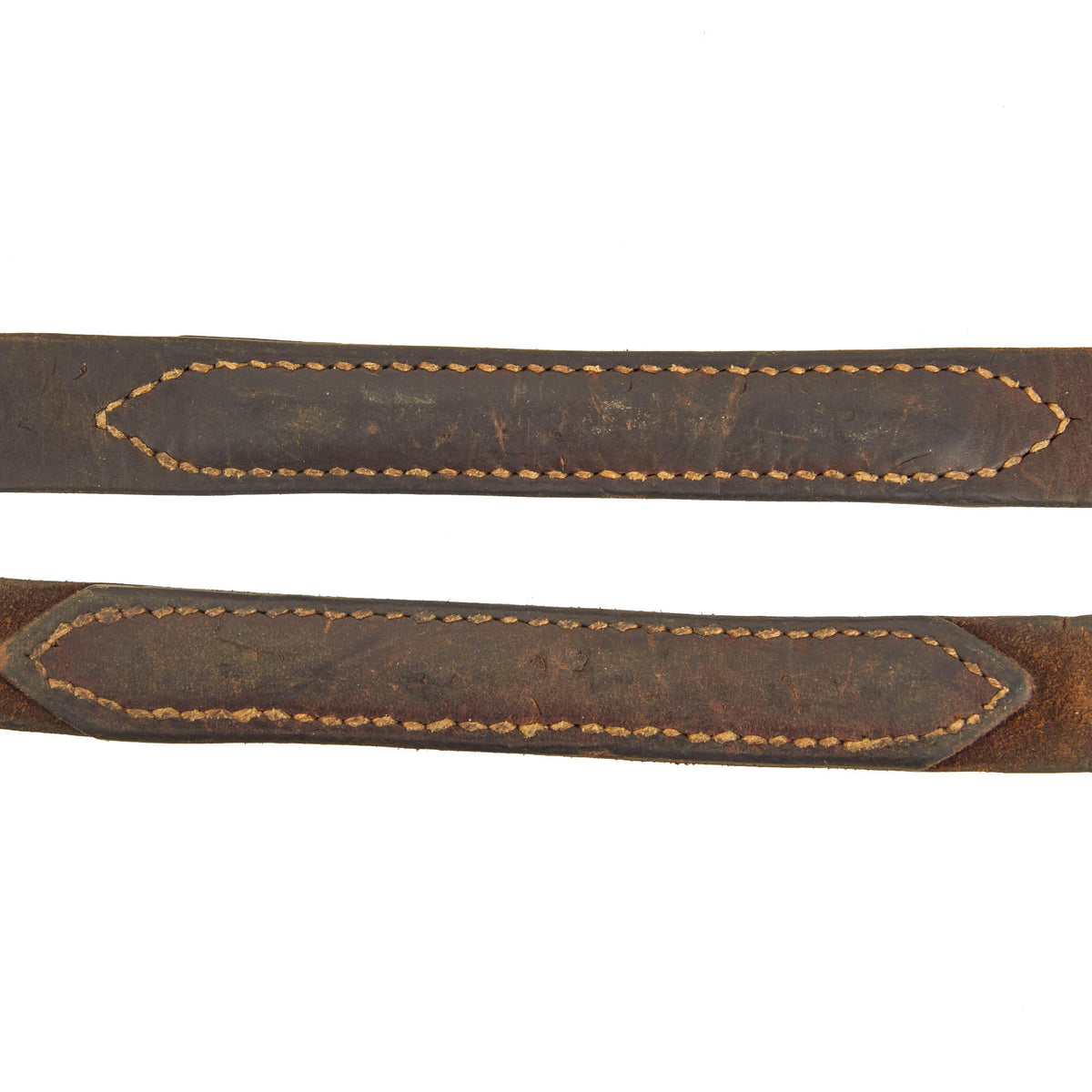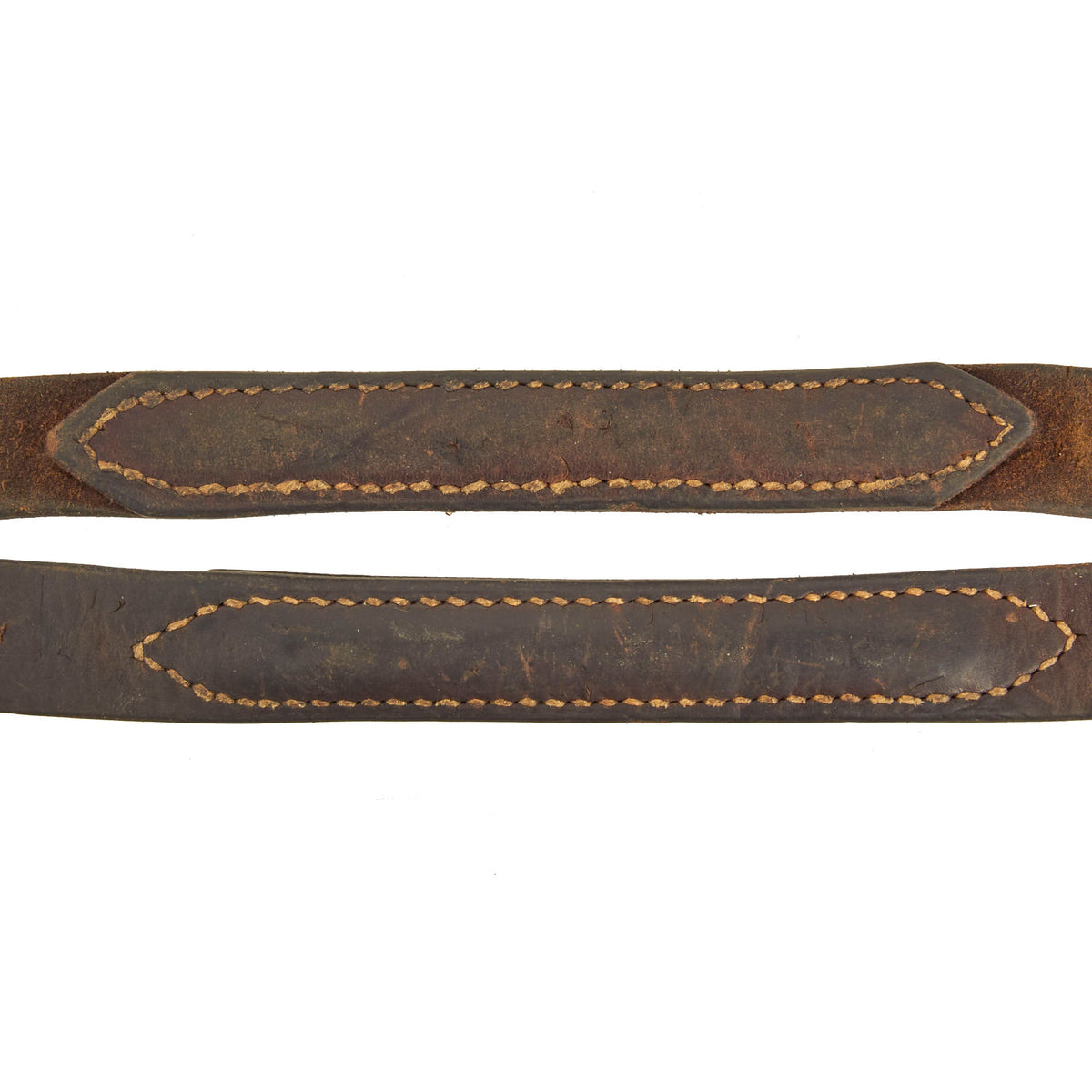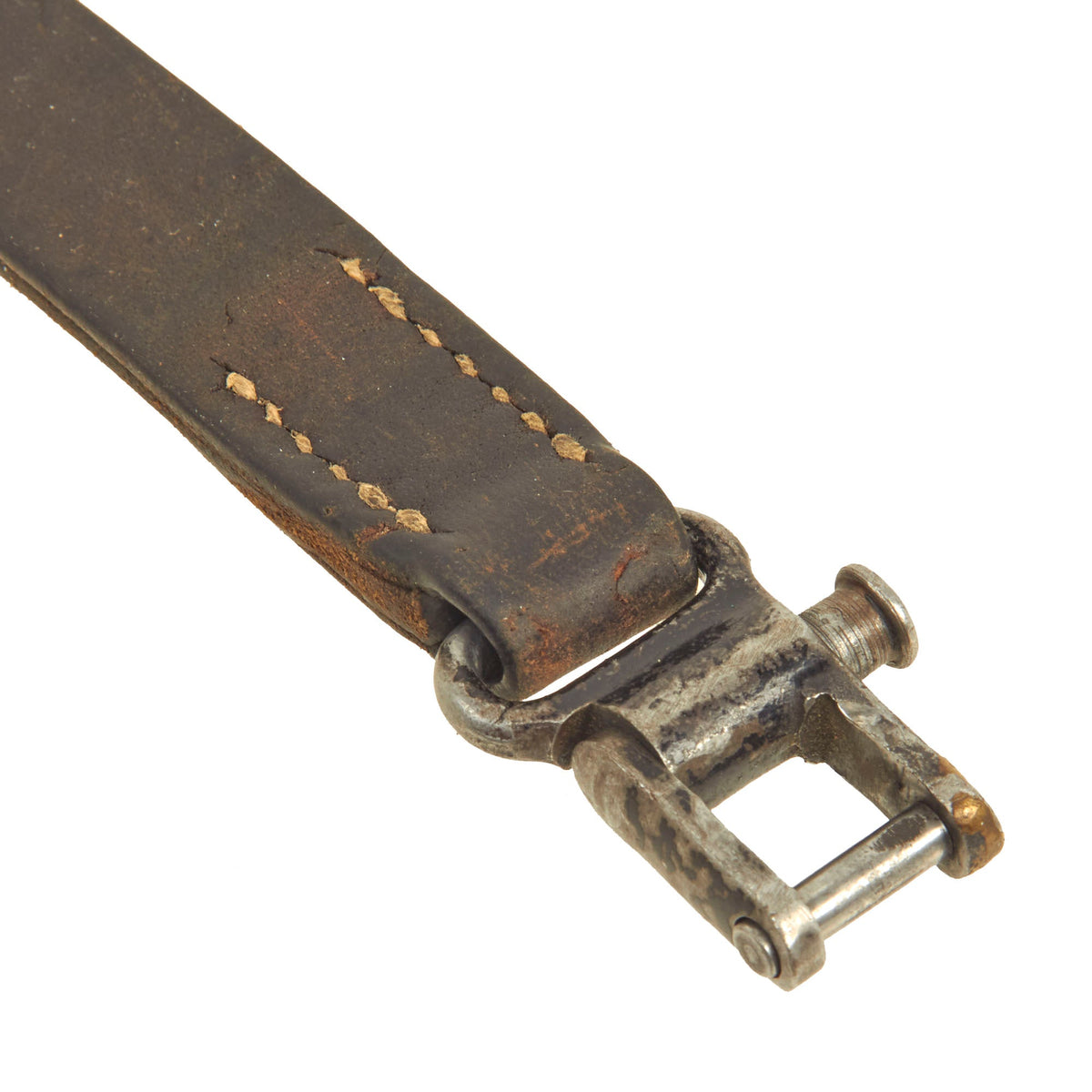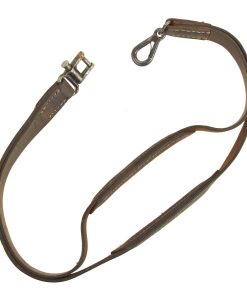Original German WWII First Model MG 42 Padded Leather Carry Sling – Geteilte Trageriemen Original Items
$ 295,00 $ 118,00
Original Item: Only One Available. The leather sling that was issued with the MG42 was constructed from two straps with a padded middle section, sewn together at each end. The sling served several purposes. It could be used to carry the machine gun in the traditional way, suspended over the shoulder, it could act as a carrying handle when split on each side of the gun and joined together at the top and it could also be used as a support when firing the MG from the hip during advancement.
The German name for the sling was simply Geteilte Trageriemen (Divided carrying sling). The sling later issued for the MG42 was almost identical to the MG34, except for the grip buckle. Production was either done by the same factories that made the gun or separate manufacturers. The BSW factory made a wide range of different MG34/42 items, like ammunition belts and starter tabs, buckles for the slings and even complete slings.
The front buckle came in three different models. The first model buckle had a separate spring and was usually unmarked or marked with S↑C (Schmöle & Co, Menden / Sauerland) marked, though this one appears to be unmarked. The second model had an integrated spring and was always unmarked. The third model had a simplified buckle and was usually found on “bla 1943” and “bla 1944” marked slings.
The rear buckle is the real difference between the Mg34 and MG34/42 sling. The first model of the buckle was too narrow to fit the MG42 handle, so a new sling buckle had to be designed. The MG42 sling will fit both grips, although fits a little loose on the MG34, while the MG34 buckle will not close properly on the MG42 grip, as the grip is too wide with the buckle too narrow. This example has the Wide Buckle and was seen being produced from 1942-1945.
This is truly a wonderful example of an MG42 sling, offered in serviceable condition. Comes ready to be fitted to your MG42 Displays!
MG 42
The MG 42 (shortened from German: Maschinengewehr 42, or “machine gun 42”) is a 7.92×57mm Mauser general-purpose machine gun designed in NSDAP Germany and used extensively by the Wehrmacht and the Waffen-SS during the second half of World War II. Entering production in 1942, it was intended to supplement and replace the earlier MG 34, which was more expensive and took much longer to produce, but both weapons were produced until the end of World War II.
Designed to be low-cost and easy to build, the MG 42 proved to be highly reliable and easy to operate. It is most notable for its very high cyclic rate for a gun using full power service cartridges, averaging about 1,200 rounds per minute compared to around 850 for the MG 34, and perhaps 450 to 600 for other common machine guns like the M1919 Browning or FM 24/29 or Bren. This ability made it extremely effective in providing suppressive fire, and its unique sound led to it being nicknamed buzzsaw.
The MG 42 was adopted by several armed organizations after the war, and was both copied and built under license. The MG 42’s lineage continued past NSDAP Germany’s defeat, forming the basis for the nearly identical MG1 (MG 42/59), chambered in 7.62×51mm NATO, which subsequently evolved into the MG1A3, and later the Bundeswehr’s MG 3, Italian MG 42/59 and Austrian MG 74. It also spawned the Yugoslav unlicensed nearly identical Zastava M53.
The MG 42 lent many design elements to the Swiss MG 51 and SIG MG 710-3, French AA-52, American M60 and Belgian MAG general-purpose machine guns and the Spanish 5.56×45mm NATO Ameli light machine gun.
Fast Shipping with Professional Packaging
Thanks to our longstanding association with UPS FedEx DHL, and other major international carriers, we are able to provide a range of shipping options. Our warehouse staff is expertly trained and will wrap your products according to our exact and precise specifications. Prior to shipping, your goods will be thoroughly examined and securely secured. We ship to thousands clients each day across multiple countries. This shows how we're dedicated to be the largest retailer on the internet. Warehouses and distribution centres can be located throughout Europe as well as the USA.
Note: Orders with more than one item will be assigned a processing date depending on the item.
Before shipping before shipping, we'll conduct a thorough inspection of the items you have ordered. Today, the majority of orders will be delivered within 48 hours. The delivery time will be between 3-7 days.
Returns
The stock is dynamic and we cannot completely manage it because multiple stakeholders are involved, including our factory and warehouse. So the actual stock may alter at any time. It's possible that you may not receive your order once the order has been made.
Our policy is valid for a period of 30 days. If you don't receive the product within 30 days, we are not able to issue a refund or an exchange.
You can only return an item if it is unused and in the same state as the day you received it. You must have the item in its original packaging.
Related products
Uncategorized
Uncategorized
Uncategorized
Uncategorized
Uncategorized
Uncategorized
Uncategorized
Australian WWII Owen MK1 Machine Carbine SMG Custom Fabricated Replica with Sling Original Items
Uncategorized
Uncategorized
Uncategorized
Uncategorized
Uncategorized
Uncategorized
Uncategorized
Armoured Fighting Vehicles of the World: AFVs of World War One (Hardcover Book) New Made Items
Uncategorized
Uncategorized
Uncategorized
Uncategorized
Band of Brothers ORIGINAL GERMAN WWII Le. F.H. 18 10.5cm ARTILLERY PIECE Original Items
Uncategorized
Uncategorized
